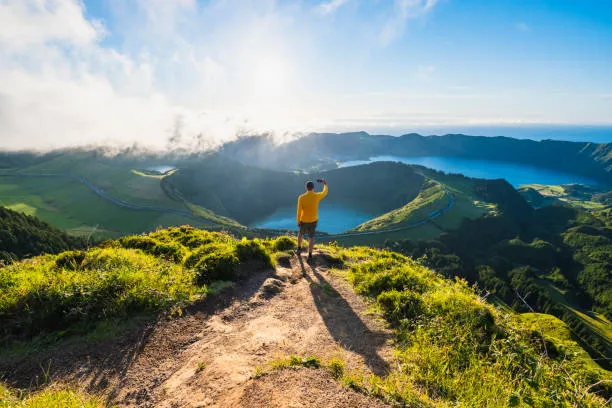In an area of more than 1,100 square miles, the park borders the Sierra National Forest to the south and the Stanislaus National Forest to the northwest.
Black bears are still roaming through the forest, and the park has impressive waterfalls and giant sequoia groves.
You can visit the park in the spring when the flowers are starting to bloom and the waterfalls are full of water, because the park gets crowded in the summer.
You need to book a parking reservation in advance to guarantee your spot in peak season.
You can drive along the Merced River if you take the El Portal Road in the Park.
Jagged granite cliffs loom into view and pine trees grow so tall you have to crick your neck to see the tops You will be given a map when you enter the park, and I recommend you download the Maps app on your phone as mobile reception is spotty at best.
Some of the trails are seasonal and you should check in advance.
There are hundreds of trails to choose from, where to begin? Here are some of the trails that I have tried.
Mist Trail with Nevada Fall Extension
Distance: 8.8 miles (loop)
Elevation gain: 1,900 ft
This is one of Yosemite’s most popular trails because you’ll get up close and personal with the spray-tastic Vernal Fall. All 300 feet of it.
If you have access to your mountain bike, you can get started right away by riding your bike along the trail.
When you reach the bridge and have your bottle filled, you’ll cross the bridge and get a chance to use the facilities.
You’ll see a fork in the road. My recommendation is to take the left fork. It’s less crowded and it’s much easier to follow, although it does get steeper and more strenuous than the John Muir Trail.
At the top of John Muir Trail, you’ll be treated to some of the most awe-inspiring views of Yosemite Falls and the looming presence of Sentinel Rock.
At this point you can either continue straight ahead or take the path that goes up to the top of Nevada Fall.
Stop in for lunch and watch out for pesky squirrels that are trying to grab a snack.
When you reach the waters of Vernal Fall, you will see the highlight of the hike. You will be rewarded with a rainbow when you climb down the steep set of stairs to the waterfall basin.
Upper Yosemite Fall
Distance: 7.2 miles (there and back)
Elevation gain: 2,700 ft
The elevation is steep and some parts of the trail are rocky, making this hike one of the most difficult I have ever done.
It’s not possible to fill up your water bottle in the stream, so you need to bring a lot of water.
It starts fairly easy, with a path that winds its way back and forth through dozens of switchbacks until you reach Columbia Rock, with nice views of Half Dome, a huge granite slab that rises nearly 5,000 feet above the valley.
The work begins when you are taken to the west of Yosemite Falls, a huge waterfall with a 320 ft drop.
The trail is difficult to navigate and takes several hours to go uphill. About halfway up we came across a hiker sitting on a camp chair and drinking a bottle of whiskey.
As you reach the “overlook” which takes you to a viewing platform on the edge of the waterfall, you are rewarded for your hard work.
The journey back is a challenge in its own way and would be helped by trekking poles.
Four Mile Trail
Distance: 9.6 miles (there and back)
Elevation gain: 3,200 ft
Though it doesn’t have the most exciting name, the Four Mile Trail is an enjoyable trail with lots of variety and fantastic viewpoints.
You can take it to Glacier Point from the valley floor.
If you only want to go one way, it’s possible to get a bus back to the bottom of the road is open in time.
If you visit at the right time of the year, the first part of the hike will be covered with wildflowers.
Cathedral Rocks is one of the most beautiful rock formations in the park due to its symmetrical appearance, and you can see it around almost every corner.
You will be able to see El Capitan, a rock face that is popular with climbers.
Also Read: Japan is open to tourism.
